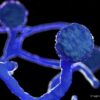From fractions to exponents: How maths can teach kindness
Manan Khurma, Founder-CEO, Cuemath
Stories of kindness always bring a smile to our faces. Let’s face it: all of us – irrespective of age, gender, political differences, or race have some kindness ingrained in us. While some of us attribute our acts of kindness to what our parents, teachers, and friends taught us, more recent research also states that kindness is learnt while learning mathematics.
While the claim seems baffling to some, there is a logical explanation. Let us talk about how we learnt fractions when we were children vis-à-vis how children learn it today. When we were in school, we were taught about numerators and denominators, and least common multiples. But today, with teaching techniques constantly evolving, fractions are taught in such a way that you learn other things as well.
Let me give you an example: You are given 3\4th of a cake, while your friend receives 1\4th of the cake. How much cake will you give your friend to ensure you have equal portions? If you said you will have to give 1\4th of your slice, well done! You got the math. However, the problem also teaches you the wonders of sharing. While mathematics does not directly explain the relationship between fractions and sharing, there is a subtle message that a child always picks up.
Kindness and adults
As adults, kindness is a more complex mathematical equation compared to fractions. I’d like to highlight exponents here and this can be explained through the acts of kindness that are being seen during the COVID-19 pandemic.
The pandemic, no doubt, has affected us directly or indirectly. However, a WhatsApp forward or a retweet calling for help is how a message can be sent exponentially.
Let’s give you another example here. Person A is in need of oxygen and puts out an SOS on Twitter. The message is retweeted by a follower, who has 1,000 followers. Of these 1,000 followers, one person with a million followers retweets it, and the message spreads far and wide, and within the next few hours, Person A has a tank of oxygen at home and is able to ensure that their loved one is safe.
While this has been the norm during the second wave, it also explains how it is exponentially possible to spread kindness – even if it is to help a random stranger. The beauty is that there are no expectations either.
Can kindness be taught?
Interestingly, people are also using the way they teach mathematics to teach kindness to children. Australian Kath Koschel, who established the Kindness Factory in 2015 to make the world a kinder place, in a blog titled ‘Why we should teach kindness like we teach maths’, said, “The Kindness Curriculum not only intends to seamlessly exist alongside the current Australian Curriculum, it seeks to play as much of a role in children’s development as other key educational subjects, like maths.”
Koschel has in fact developed a curriculum that is intended for K-10 learners. Now, if we could also explain mathematical concepts in that curriculum, then we have an absolute winner.
You aren’t born kind; kindness is taught. If we, both as parents and teachers explain the concept of kindness using mathematical examples, it can teach the child both empathy and logical reasoning. A combination of both makes the ideal problem solver.
Also Read: How to transform teaching-learning to benefit students during Covid
















Add comment